I am encountering a problem using viridis with ggplot2 and ggmarginal.
I would like to colorize dots on a Bland-Altman Plot that I am plotting with ggplot2:
diff <- (a1$A1_phones - a1$A1_video)
diffp <- (a1$A1_phones - a1$A1_video)/a1$A1_video*100
sd.diff <- sd(diff)
sd.diffp <- sd(diffp)
my.data <- data.frame(a1$A1_video, a1$A1_phones, diff, diffp)
dev.off()
diffplot <- ggplot(my.data, aes(a1$A1_video, diff)) +
geom_point(size=2, colour = rgb(0,0,0, alpha = 0.5)) +
theme_bw() +
#when the +/- 2SD lines will fall outside the default plot limits
#Thanks to commenter for noticing this.
ylim(mean(my.data$diff) - 7*sd.diff, mean(my.data$diff) + 7*sd.diff) +
geom_hline(yintercept = 0, linetype = 3) +
geom_hline(yintercept = mean(my.data$diff)) +
geom_hline(yintercept = mean(my.data$diff) + 2*sd.diff, linetype = 2) +
geom_hline(yintercept = mean(my.data$diff) - 2*sd.diff, linetype = 2) +
ylab("Difference Video vs Algorithm [ms]") +
xlab("Average of Video vs Algorithm [ms]")
p<-ggMarginal(diffplot, type="histogram", bins = 40)+ scale_colour_viridis_d()
It would now be very beautiful to colorize the dots from A1_video differently than those from A1_phones and have viridis drawing a continuous density plot.
